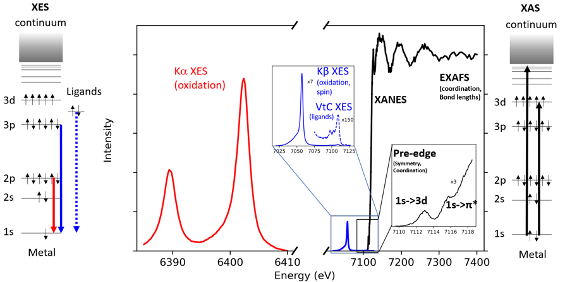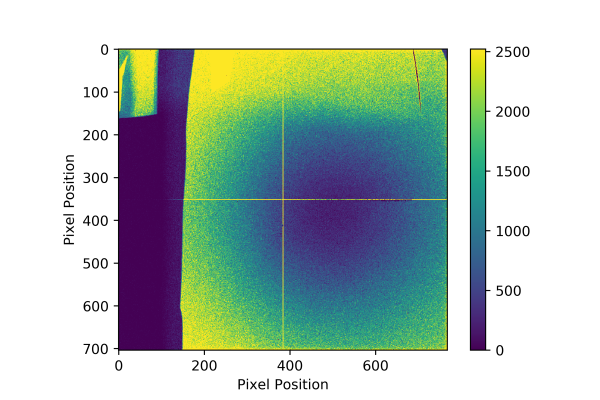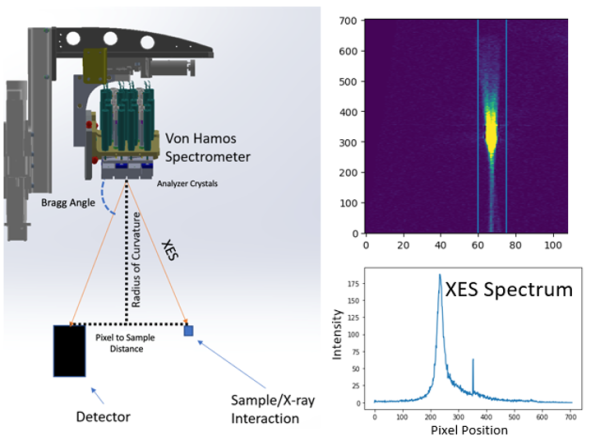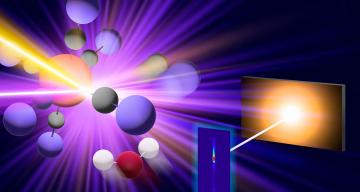Spectroscopy
X-ray Spectroscopies take advantage of the unique quantized electron levels for each element. These X-ray techniques provide detailed insights into the electronic and geometric structures of transition metal centers. The information is utilized to develop insights into the physical properties of materials, the reactivity of catalysts, and the unique chemistry of biomolecules.

Transition metal hard X-ray Absorption Spectroscopy (XAS) utilizes a high-energy X-ray photon (>5 keV) to excite a 1s core electron to the 3d valence orbital manifold and higher energy states. Following excitation, the atom decays through fluorescence which is detected perpendicular to the incident beam to differentiate from unrelated elastic scattering processes.
The standard hard X-ray XAS experiment at the LCLS utilizes an ePix array detector oriented directly above the sample/X-ray interaction point. The detector then measures the total fluorescence yield (TFY) as a function of incident energy to determine the XAS spectrum. A typical XAS experiment requires a concentration of the transition metal of interest greater than 2 mM.

The energy resolution of the ePix detector is on the order of >500 eV and thus has a limited ability to differentiate XAS-related photons from the background. An alternative to TFY XAS spectra is to collect the partial fluorescence yield (PFY) using high-energy crystal analyzers where the emitted photons can be resolved to < 1eV. Collecting a narrow emission line gives access to the high-energy resolution fluorescence detected (HERFD) XAS spectrum.
The HERFD spectra have reduced core-hole lifetime broadening affording higher energy resolution in the XAS spectrum and reduced background signal. However, the overall signal is lowered by the solid angle captured by a resolving crystal’s distance and size.
X-ray emission spectroscopy (XES) utilizes energy dispersing crystals to probe the electronic decay of atoms following photoexcitation. For 3d transition metals the Kα (2p->1s) emission includes information about the metal oxidation, the Kβ (3p->1s) encodes the metal’s unpaired electron spin, and the valence-to-core (valence->1s) decay captures information about ligands bound to the metal.
This technique can be coupled to X-ray structural methods such as X-ray diffraction (XRD) and X-ray diffuse scattering (XDS) to reveal detailed correlations between electronic and geometric structures. The LCLS currently employs 3 von Hamos geometry analyzers for XES experiments. A vacuum-compatible 16-element spectrometer is always equipped with Si (440) crystals and intended for Mn Kb experiments. Two 4-element spectrometers are available with interchangeable crystals.


